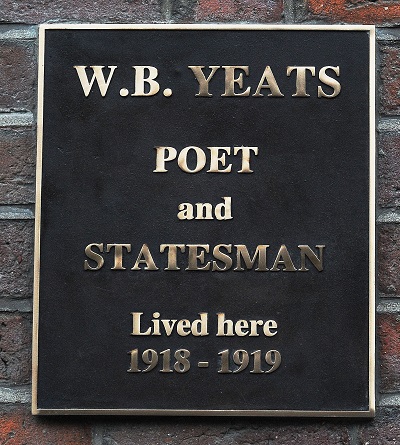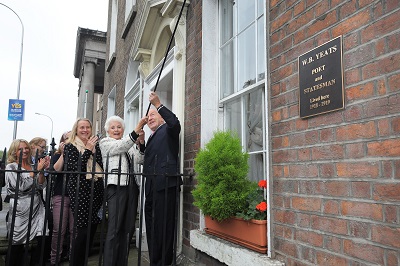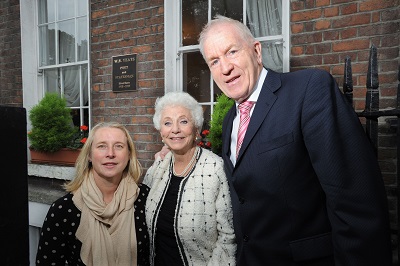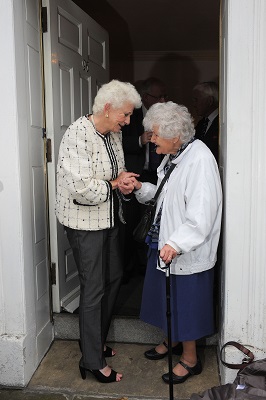Unveiling of commemorative plaque on former home of WB Yeats, first Irish recipient of the Nobel Prize in Literature, by Mr Jimmy Deenihan, TD, Minister for Arts, Heritage and the Gaeltacht
26 September 2013 The link between 96 St Stephen’s Green and the Nobel laureate WB Yeats was commemorated today, when Mr Jimmy Deenihan, TD, Minister for Arts, Heritage and the Gaeltacht unveiled a plaque on the house where Yeats once lived.
The erection of the plaque was initiated by, Dr Maureen Concannon, who has lived in No 96 for the past 30 years, and has paid for the plaque casting and all related expenses. Dr Concannon has long been concerned with the historical and heritage value of St Stephen’s Green. WB Yeats resided at the St Stephen’s Green Club (i.e. No 9 St Stephen’s Green), and also at No 73 and No 96. While No 73 St Stephen’s Green is no longer a residential property, Dr Concannon is anxious to highlight the Yeats’ association with St Stephen’s Green by unveiling a plaque at No 96.
It was the National Library of Ireland’s award-winning Yeats exhibition which brought the link between No 96 St Stephen’s Green and Yeats to light. A visitor spotted the reference to No 96 St Stephen’s Green in the exhibition text, and then shared this information with Dr Concannon. The exhibition, which celebrates Yeats’ life and works, recognizes Yeats’ association with St Stephen’s Green as one element of his important links with Dublin city.
During 1918, the poet and his new wife George Hyde-Lees moved into Maud Gonne’s house at No 73 St Stephen’s Green, at Maud Gonne’s invitation. She herself was in Holloway Prison in London for anti-war activities, but late in the year she arrived illegally in Dublin, having been conditionally released from Holloway. She made her way straight to No 73, but Yeats turned her away, citing two reasons. First, because nursing staff were in residence, looking after his heavily pregnant wife, there was no room in the house – even for him. Second, as his wife was also seriously ill, he could not place her at further risk, in the event of a raid by authorities in search of Maud Gonne.
Following this confrontation, Yeats and his wife could no longer stay under Maud Gonne’s roof. The household moved further down the Green to lodgings at No 96 which they left on 22 February 1919. Four days later, Yeats’ first child, Anne Butler Yeats, was born.
During the time Yeats lived in No 96, he worked actively at the Abbey Theatre, and was also busy writing poetry.








